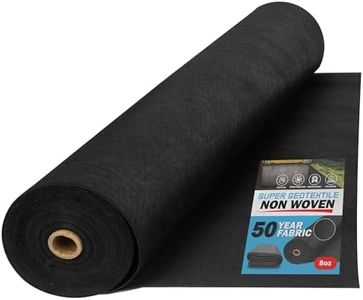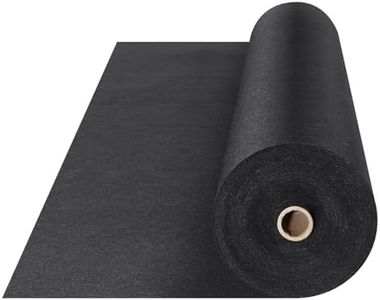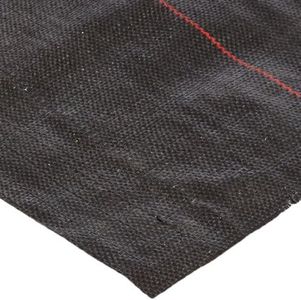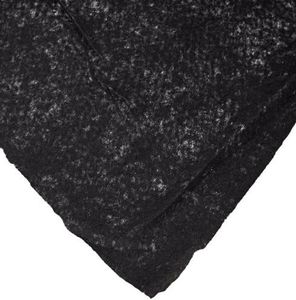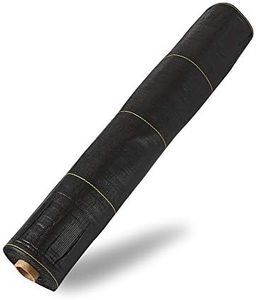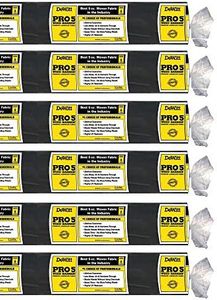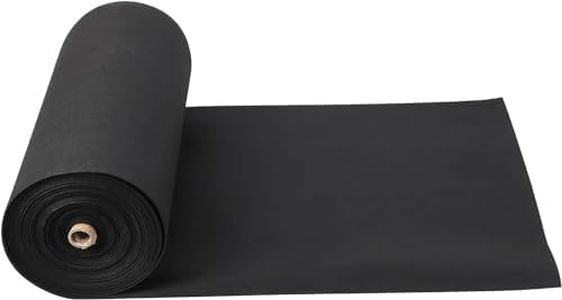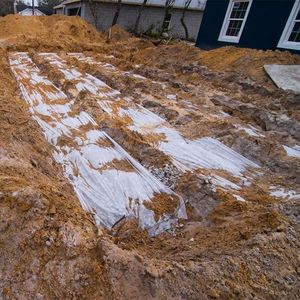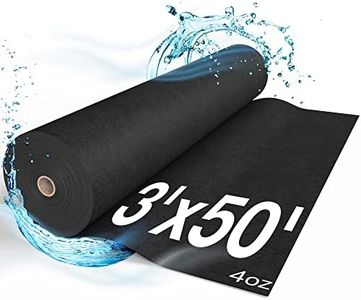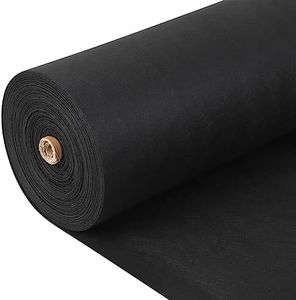10 Best Drainage Fabrics 2025 in the United States
Our technology thoroughly searches through the online shopping world, reviewing hundreds of sites. We then process and analyze this information, updating in real-time to bring you the latest top-rated products. This way, you always get the best and most current options available.

Our Top Picks
Winner
Super Geotextile 4, 6, 8 oz Non Woven Fabric for Landscaping, French Drains, Underlayment, Erosion Control, Construction Projects - 6 oz (3X50)
Most important from
1759 reviews
The Super Geotextile 6 oz Non Woven Fabric is a versatile and heavy-duty option for various landscaping and construction projects. One of its major strengths is its durability; the 6-ounce fabric weight ensures it is tough and can withstand harsh conditions. This makes it ideal for uses like French drains, erosion control, and underlayment.
Installation is straightforward, with pre-cut sizes available to reduce waste and save on installation time, which is a big plus for both DIY enthusiasts and professionals. Additionally, the product is designed to last many years, thanks to its superior strength and resistance to UV rays and rotting, making it a reliable long-term investment.
Despite these advantages, it's important to consider that the heavy-duty nature of the fabric might be overkill for smaller, less demanding projects, where lighter fabric could suffice. Also, while the roll size (3 feet by 50 feet) is convenient for many applications, it may not be sufficient for larger projects without purchasing multiple rolls, potentially increasing overall costs. This fabric is particularly beneficial for those involved in more demanding landscaping and construction projects, where strength and durability are critical.
Most important from
1759 reviews
VEVOR Geotextile Landscape, 4ft x 100ft 8 oz Non-Woven PP Drainage 350N Tensile Strength & 440 N Load Capacity, for Ground Cover, Garden Fabric, French Drains, Black
Most important from
1996 reviews
The VEVOR Geotextile Landscape Fabric is a robust and versatile option for anyone needing drainage fabrics. It’s made from 8 oz non-woven polypropylene (PP), which offers significant strength (350N tensile strength and 440N load capacity) and durability. This material is erosion-proof, damp-proof, and tear-proof, making it a solid choice for both garden and construction applications. Its fabric weight ensures it can handle heavy-duty tasks effectively.
In terms of permeability, this fabric excels with excellent water drainage and air penetration, helping maintain soil nutrients and promoting healthy plant growth. Additionally, it is soil-friendly and efficient at gravel filtration, making it suitable for use in French drains and similar applications. The fabric is easy to install and can be cut to fit various dimensions, simplifying the setup process. However, one potential drawback is that it might be heavier (20.3 pounds) compared to lighter alternatives, which could be a consideration for some users.
The roll size of 4ft x 100ft provides ample coverage for larger projects. While it does offer UV resistance due to its material properties, direct exposure over prolonged periods might still affect its longevity. This geotextile fabric is versatile enough for multiple uses, such as erosion control, weed control, and underlayment in construction and gardening projects. If you are looking for a reliable and heavy-duty drainage fabric, this product from VEVOR is worth considering.
Most important from
1996 reviews
Happybuy Driveway Fabric, 13x108ft Commercial Grade Landscape Fabric, Garden Weed Barrier Fabric Heavy Duty, Geotextile Fabric Underlayment Gravel, Ground Cover Drainage Fabric, Weed Control Blocker
Most important from
3693 reviews
The Happybuy Driveway Fabric stands out as a durable and versatile option for various landscaping and construction needs. Made of high-density woven polypropylene (PP) material, it is known for its durability and ability to conform to uneven surfaces. This makes it suitable for tasks such as driveway stabilization, gardening, and drainage.
The fabric boasts a high tensile strength of 600 lbs, allowing it to bear significant weight and stress, which is ideal for supporting heavy loads like gravel and stones and ensuring the stability of the soil beneath. Measuring 13x108 feet, it offers a large coverage area, which can be cut to fit specific project needs.
The fabric’s breathability is another significant advantage, as it allows water and air to pass through while maintaining soil moisture and preventing erosion. This helps improve soil quality and provides a conducive environment for plant growth. The fabric is heavy, weighing 38 pounds, which might pose challenges during installation without additional help.
